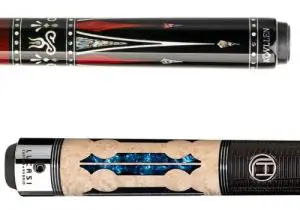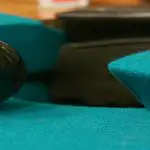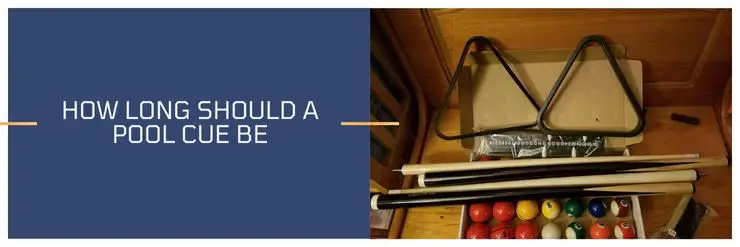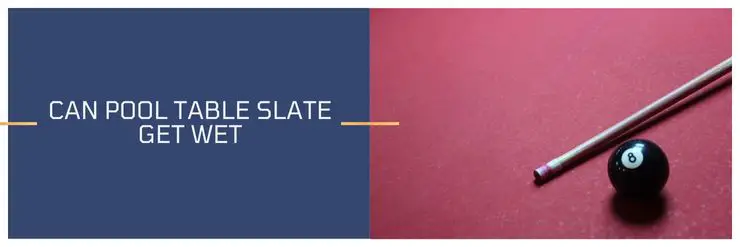In the game of pool, whenever a player holds the cue stick to make a shot, it is expected that he knows what to do with it and may not need to know what it is made of. However, this player would produce better results and performance by understanding a little more about the cue and what its made from.
So, what are pool cues made of? The most common wood for pool cues is made from straight-grained hard rock maple wood. Other, more exotic woods are also used such as Red Ivory, Ebony, Brazilian Rosewood, Blackwood, Olivewood, Zircote, Cocobolo, Bocote, to name a few. Carbon fibers is another material rising in popularity.
Does the material really matter? Can you still play well with a cheaper pool cue, lets take a deeper look into this.
Whats the best material for pool cues
Wood is the best material for a pool cue, but some cue makers use aluminum, titanium, acrylic, fiberglass, or graphite. These materials are cheaper alternatives and are not ideal for top-notch gameplay.
Fiberglass or graphite are less exposed to warping and dings, but they do not give the type of performance that wooden cues will deliver. Warping occurs with some cues, mainly due to improper storage and handling on the user’s part.
If you want to get a cue for yourself, it is recommended that you get a good-quality wooden cue. You should also ensure that you get the right length and weight suitable for you. Getting the right weight is a function of your style of play and preference. Heavier cues are recommended for beginners, which make the ball move faster and less aggressively. Professionals go for lighter cues that give them more action while using the cue ball.
One of the principal considerations involved in buying cues is the price. There are different price ranges of cues based on characteristics such as performance and aesthetics. The high-end cues are usually those that are collector items. These cues are usually purchased mainly due to their aesthetic value and not necessarily for great gameplay performance. They are usually covered with different ornaments and laid with precious stones.
If you are looking for good quality cues based on a great performance, the prices are usually markedly higher than the average ones made of other materials that are not wood. The important thing is to work with your budget and ensure you test cues for their performance before purchasing them. Online purchase requires a greater deal of research.
What wood are pool cues made of
Wood is the most common cue material. There are different types of wood that are used to make cues.
Hard-grained Maple wood is the most common wood used in pool cues, it’s a strong, durable wood that is perfect for cues that’s why some of the best pool cues you can buy, use maple as its wood.
Although Maple is the most common material for pool cues, it’s also common to have a maple shaft and maple butt with exotic woods as inlays of the cue. Some of the exotic woods listed below might be used for the inlays which only serves for the aesthetic look of the cue and won’t add to its function. You might wonder if expensive pool cues are worth the money, but to a certain extent the really are.
Ashwood is another common wood used for pool cues. Ashwood is most likely found in either snooker cues or English pool cues.
The curly and birdseye maple wood types can be used for almost all parts of the cue. They have hard and beautiful features suitable for making quality cues. Maple wood can easily be colored and matched with any other pool cue word. Maple is lightweight and more expensive.
Cocobolo is another type of wood widely as a cue material due to its high hardness and density. Cocobolo wood is much heavier than maple, and the central part usually needs to be hollowed out because of the weight.
Ebony is also widely used for making cues. It is also hard and heavy, as its weight is usually reduced by hollowing out the central part. If the cue is too heavy, the cue balance point usually moves forward.
Zircote is used to make a fore arm, butt sleeves, and some inlay materials on the cue.
Rosewood is also used for making cues, and it is medium-hard wood. The colour of this wood varies from brown to purple and is relatively expensive.
What are pool cue tips made of
There are a few different types of tips but only a few types are used in competitive play.
Types of tips
- Layered laminated tips
- Solid tips
- Phonemic resin tips
The material used mostly for cue tips is leather. It is made by compressing the fibers of hard leather (Layered laminated tips).
The leather comes in varying consistencies of soft, medium, or hard. The size of a cue tip ranges from 11.75 – 14 mm in diameter. In cue tip production, the most common type of leather is vegetable-tanned leather. Japanise pig leather is used for more premium cue tips.
Good cue tips usually last for as long as six months.
Solid tips are basically a solid piece of leather, they are usually cheaper and don’t last as long as laminated leather tips. One of the main issues with these types of tips is they require more grooming as they tend to mushroom easier.
Phonemic resin tips are extremely hard tips, usually a 99 on a durometer – which measures the density of a tip.
Because of their extremely hard nature, they aren’t really used on playing cues but are popular on break and jump cues
What are pool cue joints made of
A Pool cue joint is the part of the cue where the butt and the shaft connect. The joint is usually made of varying materials. The most common materials used for joints are plastic, wood, and stainless steel. The joint used determines the feel of the cue.
Cue sticks made with stainless-steel joints give what is called a stiff hit. This happens when you strike the ball, and you do not feel the effect of the strike throughout the entire cue.
Wooden joints give a feel that is said to be fluid or soft. When you use a wooden joint and hit the ball, the effect of the strike goes all the way through the cue. The wooden joint is generally used for the traditional house cues.
Composite joints are those that are made of plastic, and they give a compact or solid hit. With the plastic joints, the feel is somewhere between the stiff hit in the stainless-steel joint and the fluid hit of the wooden joint.
What are pool cue inlays made of

A pool cue inlay is a design put into the wood of a cue. An overlay, on the other hand, is a design put on the wood. Pool cue inlay materials vary. They include Dark choral, micarta (used as grommets, butt sleeves, shaft and butt joint decoration rings, and inlay materials), turquoise, lapis, malachite, mother-of-pearl, leopard skin japer, and Ivory.
For high-end cues, Ivory is the most used inlay material.
All in all
In general, getting a cue is largely a function of preference and affordability. The materials used to make the cue, the tips, the joints, and the inlays vary in price and functionality. Ensure that you do your research well and get the cue that works best for you. Great cues are tools you get to use for a very long time.
Rob is an avid player and fan of all cue sports, particularly 8-ball, and snooker. He has competed in a few local 8-ball tournaments and although he is not a professional, he can compete with the best of them.






